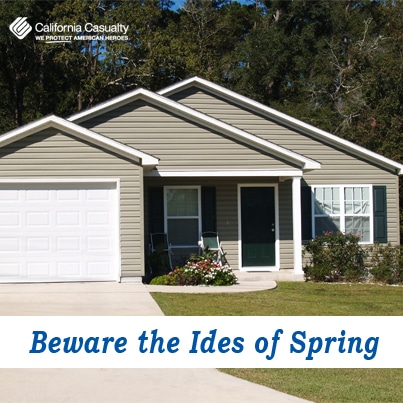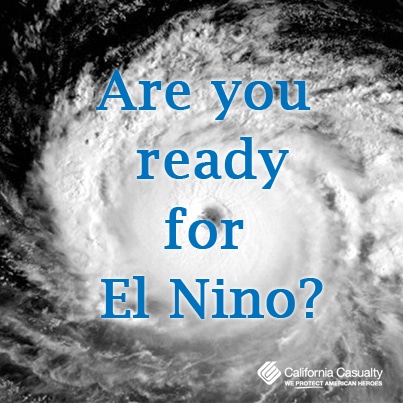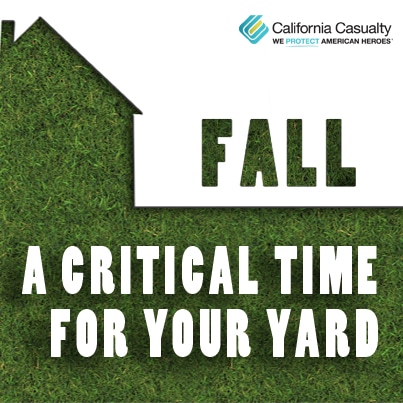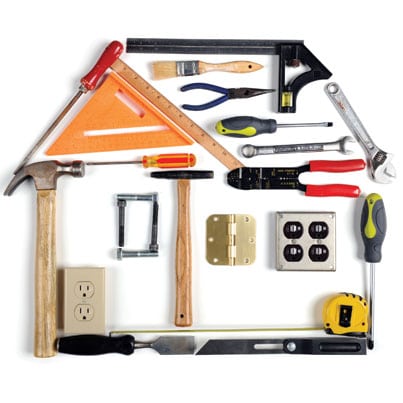Beware the Ides of Spring
Springtime; for many of us it means we can start hanging up the cold weather gear and begin getting out the gardening equipment. However, the pleasant change in weather can often lull us into a false sense of security. In fact, I’m reminded of the warning Julius Caesar was given, “Beware the Ides of March.”
So what does that warning have to do with you and me? While March marks the end of winter, it starts a dynamic time of year with a clash of late season cold fronts and warm gulf air leading to dangerous thunderstorms, flooding and even tornadoes.
Many scientists warn that between climate change and El Nino, we are facing some of the most extreme and unpredictable weather patterns ever seen: one of the worst droughts and fire seasons ever in California followed by torrential rains and heavy snows, record flooding in Texas, Missouri and South Carolina, rare deadly December tornadoes across the Midwest and South and unprecedented holiday warmth in the Northeast.
Maybe we should change Shakespeare’s line to “Beware the Ides of Spring.”
Springtime Dangers
Flooding
Flood season begins in spring as winter snow and ice melt. Severe thunderstorms can add tremendous amounts of water to the runoff, often inundating cities and towns located in flood zones.
Flooding is the most common and costly natural disaster in the United States, causing an average of $50 billion in economic losses each year. Anyone living in a low-lying area near a lake, river or stream should make sure they are protected. Homeowners and renters insurance don’t cover floods from rivers, streams, or other runoff; if you want your home and valuables protected, you need flood insurance that often has a 30 day waiting period.
Flooding caused by a damaged roof or broken water pipe is covered by most homeowners insurance. While it can happen any time of year, springtime thawing can be the culprit. Do you have enough coverage if water should destroy your valuable possessions? The Federal Emergency Management Agency estimates that just two inches of water can cause more than $10,000 for repairs and replacement of flooded items. Six inches of water can add up to more than $30,000.
Fires
While a house fire can happen any time of year, spring marks the start of wildfire season. More than 4,600 structures were destroyed by wildfires in 2015, 2,667 of those were homes or apartments.
Fuels, such as grasses and brush, start to dry out as temperatures warm. Before they become a threat to your home you should mow and trim back any grasses, trees or bushes to create a 30 foot defensible space. Don’t forget to move gas grills, firewood and other combustibles 15 to 30 feet away from your home. You can find more wildfire prevention tips here.
Tornadoes
The volatile mix of warm and cold usually results in tornadic activity. Almost every state has experienced a tornado, and if you live in the South, Midwest or points east you may have already taken these tornado preparedness actions:
- Identify a safe place in your house (basement, storm shelter or sturdy interior reinforced room on the lowest floor of the home
- Prepare an emergency kit with first aid supplies, food, water and sanitary needs (include important medicines, eye glasses, etc.)
- Practice tornado drills
Severe Thunderstorms
Thunderstorms are the top cause of insured loss each year in the United States due to high winds, large hail and dangerous lightning. When a thunderstorm approaches, immediately move indoors and away from windows and avoid electrical equipment and corded telephones. Preparations for severe thunderstorms are much the same as tornadoes.
How to Protect Your Property
Before wild weather has a chance to threaten your home, here are some key tips to help prevent damage:
- Check roofs and shingles for damage, lifting or other signs that they might leak
- Clean gutters and drain spouts and make sure they direct water away from your home’s foundation
- Look for loose boards, cracking or other damage on decks and porches to avoid tripping, falls or other hazards
- Inspect the exterior of your home for cracks, holes or exposed wood or siding that could allow water, insects or small wildlife to get in
- Make sure chimneys and vents are well sealed and sturdy to prevent water or wind damage
- Trim back trees and bushes, looking for weak or broken branches or other damage, to protect against them falling into roofs or siding
Check Your Insurance
Before a catastrophe strikes, the Insurance Information Institute says you should:
- Purchase homeowners or renters insurance
- Get flood insurance if you live in a flood prone area
- Review your policy so you understand your coverages (replacement costs, replacement of personal possessions, and additional living expenses)
- Make a full inventory of everything you own
After a Disaster
If the unexpected should occur, you should take these steps:
- Secure your property from further damage or theft
- Contact your insurance company as soon as possible
- Catalogue your losses and take pictures
- Save receipts of meals, purchases and hotels while you are unable to live at home
- Be careful of fraudulent contractors
Now is good time to reevaluate your protection against the unpredictable moods of spring; contact a California Casualty advisor to purchase flood insurance, get a review of your policy or add any coverage that you might need. Give a call today at 1.800.800.9410 or visit www.calcas.com.
Resources for this article:
https://www.floodsmart.gov/floodsmart/pages/flooding_flood_risks/the_cost_of_flooding.jsp
https://www.nifc.gov/fireInfo/fireInfo_statistics.html
https://www.redcross.org/prepare/disaster/tornado
https://www.iii.org/article/making-sure-your-home-properly-covered-disaster
https://www.redcross.org/find-help/disaster-recovery/recovering-financially
El Nino Could Translate to Wild Weather
Get ready, El Niño is back. The National Oceanic Atmospheric Administration (NOAA) says continued heating in the Pacific Ocean means a strong event this fall and winter. Wind conditions and several tropical cyclones are indications of an intensifying effect which could lead to one of the strongest El Niño’s in a long time.
NOAA and other climate watchers say while every El Niño is different, these are some general things we can expect:
- Cooler, wetter weather in the southern U.S. with possible heavy storms and flooding
- Wetter weather for Southern and Central California with intense rain and possible flooding and mudslides
- Drier, warmer weather in the Pacific Northwest and Central U.S.
- Slightly warmer weather in the Rocky Mountain Region, but with strong snow storms and blizzards (some of the biggest blizzards have come during past El Niño years)
- Warmer and drier on the East Coast
- Less Atlantic hurricanes but more Pacific cyclones and hurricanes
Here are some tips before the wild weather blows in:
- Make sure your vehicles have comprehensive coverage for damage from weather, flooding, mudslides, falling objects (rocks and trees), etc.
- Check your auto’s tires to make sure they will provide traction in rainy, icy or snowy weather
- Inspect the roof of your home to make sure it’s ready for the onslaught of heavy rain, snow or ice
- Make sure your gutters and downspouts channel water away from your home
- Trim branches and trees that could blow onto your roof or home in a heavy storm
The Insurance Information Institute estimates that over the past five years, damage from wind and storms has been the number one cause of damage claims to homes, with the average payment just under $8,800. Before El Niño takes aim at your home, they recommend you:
- Review your insurance to make sure you are covered for storm loss
- Purchase flood insurance (which is not included with most homeowners insurance) if you live in a flood prone area
- Talk with your insurance company to make sure you have the adequate limits and deductibles
- Take an inventory of all the possessions you own
No matter the weather, California Casualty is ready to help with your storm insurance preparations. Contact an advisor today for a policy review or comparison at 1.800.800.9410 or visit www.calcas.com.
Sources for this article:
https://www.oc.nps.edu/webmodules/ENSO/NA_EN.html
https://www.cpc.ncep.noaa.gov/products/analysis_monitoring/enso_advisory/ensodisc.html
https://mashable.com/2015/07/09/strongest-el-nino-on-record/
https://www.iii.org/fact-statistic/homeowners-and-renters-insurance
https://www.pciaa.net/pciwebsite/cms/content/viewpage?sitePageId=42247
https://www.iii.org/fact-statistic/homeowners-and-renters-insurance
Fall: A Critical Time for Your Yard
As the temperatures cool and the leaves begin to fall, don’t think your yard work is done. Autumn is a critical time for lawns, gardens and other landscaping. What you do now will impact how nice your lawn and garden look next spring.
Did you know that fall is when Kentucky Blue Grass starts regenerating and most root growth takes place? A good feeding and watering will do wonders for that lush green carpet you dream of in the spring and summer. It is also the best time to do weed control. So what do you need to do? These tips come from Lawn Care Made Easy:
- Increase the height of your mower blade; longer grass will help protect against winter’s cold
- Reseed bare patches
- Fertilize your lawn for a healthier spring growth
- Make sure to rake or mulch leaves that can choke your lawn
- Do extra weed control
- Remove highly acidic pine needles that can interfere with lawn growth
Don’t forget your garden. Fall is the time to clean up old plants, add mulch and plant bulbs that will burst with colorful flowers in the fall. Treehugger.com has a list of things you can plant in your garden this fall:
- Trees and shrubs
- Spring flowering bulbs (tulips, crocuses and daffodils)
- Perennials
Other important things you should be doing before the first freeze come from the article, 14 Fall Tips for a Better Spring Garden:
- Emptying hoses, rain barrels and sprinkler systems
- Prepare your spring garden beds and get cold frames and poly-tunnels ready for those early spring plants
- Winterize any garden ponds
- Give young trees and shrubs a good deep fall watering
- Clean, repair and sharpen tools and find proper storage for them
- Review and plan for next year
Just like your garden, when was the last time you had an auto or home insurance policy review? Have you upgraded your home, bought new appliances, electronics, jewelry or vehicles? Now is a great time to contact a California Casualty advisor to make sure you are getting the best coverage at the best value at 1.800.800.9410 or www.calcas.com.
Sources for this article:
https://www.lawncare-made-easy.com/fall-lawn-care.html
https://www.treehugger.com/lawn-garden/3-things-you-can-plant-your-garden-fall.html
Maintain Before Summer Ends
From pulling weeds to cleaning floors, it seems that work around the house never ends, but it’s a lot easier to tackle before winter storms and cold weather move in. As we enjoy the last few months of summer, now is a good time to do maintenance that will prevent damage, prepare your home for winter, and add lasting value.
These mid-summer home maintenance tips are courtesy of MSN Real Estate:
- Do an energy audit and start fixing insulation and cracks
- Insulate hot water pipes
- Clean patio furniture
- Scrub your concrete
- Patch concrete and asphalt cracks
- Prune or remove problem trees and shrubs
- Clean exhaust fans
- Fix the fence
- Make your landscaping “critter proof”(deer, rabbits and other animals can cause thousands of dollars of damage to your plants and trees)
Doing regular maintenance can not only protect your home, but it can enhance the value of your largest investment. Most realtors and home repair experts say simple projects can add thousands of dollars to your home’s worth. Wikihow.com is a great resource with tips that give the best payback:
- Clean and reduce the clutter around your home
- Spruce up your yard
- Repaint the interior and exterior
- Upgrade your lighting and light switches
- Add wood trim
Don’t forget another vital piece to preserving your home and all the things that come with it; insurance. Now is the time to get a home insurance update and policy comparison to make sure your precious items are fully covered at the best value. Have you made improvements that could land you big discounts? Don’t forget that bundling your auto and home can offer big savings. Call a California Casualty advisor today for a no hassle policy review at 1.800.800.9410.




